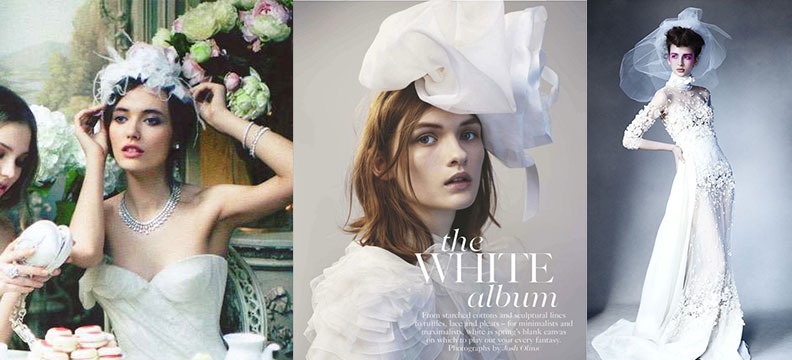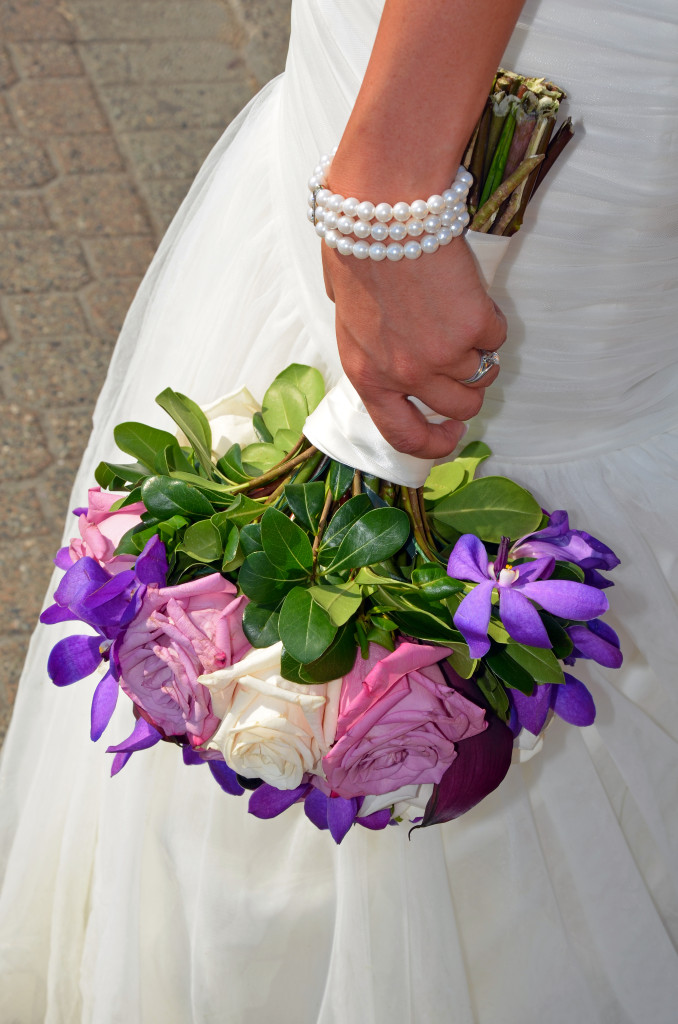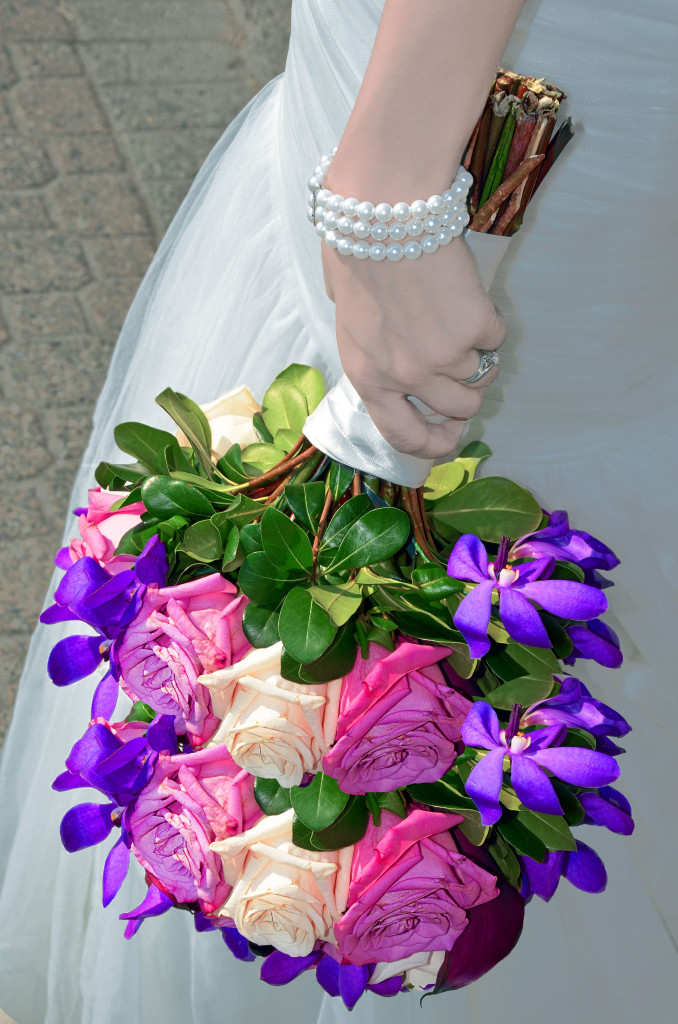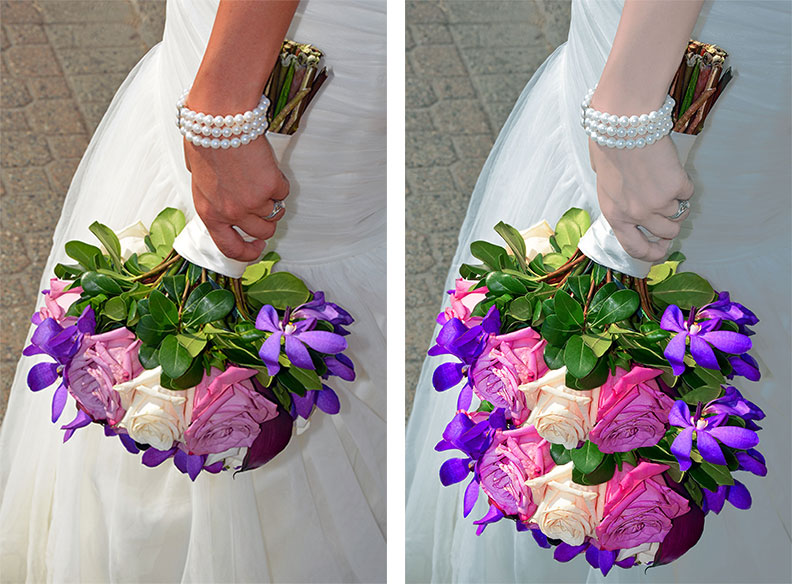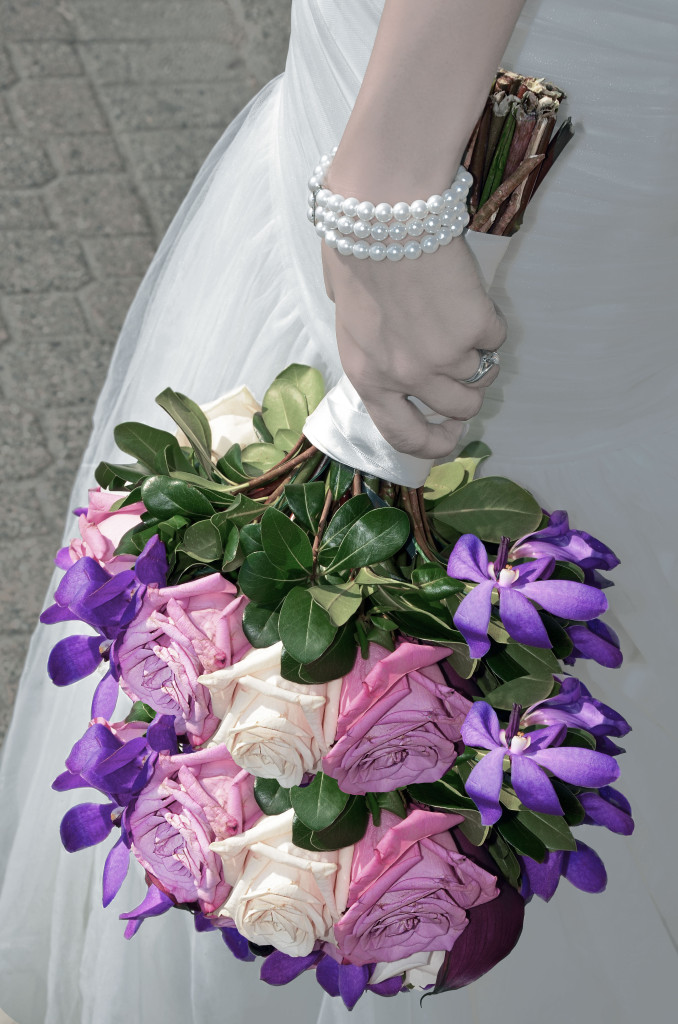This week, we learned about various Photoshop tools as well as how to use adjustment layers and layer masks to edit parts or all of an image without making permanent changes to the original.
From the photos provided by my instructor, I chose an image of a woman’s arm and hand holding a wedding bouquet. I decided to think of this project as preparing an image for a high-end wedding magazine editorial piece, similar to those in the annual Vogue wedding issue. I searched online for photo inspiration and found that many of these glossy wedding photos have a cooler tone, with the models skin taking on a “porcelain doll” effect:
In my original photo (see below), the woman’s skin appears very warm in color, and the bouquet, the focal point of the photo, is too dull to compete with the bright white of the wedding dress behind it.Before I tried to replicate the lighting and color tone of the inspirational photos I found, I watched this Photoshop tutorial on adjustment layers in order to refresh myself on how each of them work.
To begin editing my photo, I used the clone stamp tool and duplicated some of the flowers in a separate transparent layer above the original image in order to double the size of the bouquet. I cleaned up the edges of the cloned portion with the eraser tool, creating one cohesive bouquet. I then merged those two layers into one titled “Base Image”, however I kept an original version of the image and original clone layer, grouped in my layers panel, turned off, just in case.
I essentially split my image into three different layer masks using adjustment layers:
Mask #1: Bouquet Adjustments:
- Vibrance layer: I masked off everything except the bouquet itself. I turned the vibrance up a little bit to get the flowers to “pop” without appearing too fake.
- Selective Color layer: I created this layer as a clipping mask to the Vibrance layer/masked image below it. Adjusted the Greens in the image, turned down the Yellow in the image so the leaves appeared a deep green in color.
- Brightness/Contrast layer: Bumped the brightness up just a few points to improve the overall vibrancy. Created as clipping mask to the layer below.
- Hue/Saturation layer: Increased saturation +30 points to finish off the bouquet. Created as clipping mask to the layer below.
- I used the dodge tool to lighten the shadows on the far left pink roses and the sharpen tool to bring out more of the details in the inner rose petals.
Mask #2: Outside Bouquet Adjustments:
- Vibrance layer: I used Cmd+I (on a Mac) to invert my layer mask so that I could make adjustments to everything outside of the bouquet without having to create a new mask from scratch. I turned the vibrancy all the way down to zero. This drained the colors so the bouquet’s vibrancy became starker in comparison.
- Selective Color layer: In order to cool off the overall tone of the background and woman, I adjusted the Whites, Neutrals, and Blacks in this layer, experimenting a lot, but typically increasing Cyan and Black. With the Neutrals, I decreased black in order to allow some of the peachy skin tone to remain. This adjustment layer added just a hint of a blue tint to the photo. I created this layer as a clipping mask to the Vibrance layer/masked image below.
- Curves layer: I used Curves for further tone adjustments, bowing the graph’s curve down just slightly to further deepen the blue tine of the shadows in the photo. This effect created an even starker difference between the bright bouquet and the rest of the photo. Created as a clipping mask to the layer below.
- I used the sharpen tool to bring out more detail in the pearl bracelet.
Mask #3: Skin Adjustments:
- Selective Color layer: On top of the changes made to everything outside of the bouquet, I created a layer mask for just the woman’s arm in order to further adjust her skin tone to complete the “porcelain doll ” effect — skin that appears cool to the touch and whiter in tone. I adjusted the Whites, turning the Black down to -100, decreasing Magenta a few points to remove more of the pinker skin hues, and bumping up the Cyan to cool the tone until it was the appearance I desired. I also toned the Neutrals very slightly, turning Black down about 15 points.
With all of these adjustment layers turned on, the resulting effect is one I believe makes a solid attempt to mimic the look and feel of a wedding magazine editorial photo, perhaps accompanying an article about wedding bouquet trends.
Here is a side-by-side comparison of the original photograph (left) and my edited version (right):
As part of my assignment, I also added a Black/White adjustment layer on top of all of my layers, turning down the opacity to 50%. When this layer is turned on, the effect on the image is almost that of a vintage color photograph, with a slight antique coloration to the flowers in the bouquet.
Previous to this project, I did not often use adjustment layers in my personal Photoshop projects, however now that I know how to use them, I believe implementing them (instead of the Image –> Adjustments menu options) promotes much more creativity and experimentation, without the fear of having to start over with the original image file. In my experience, it’s the vast number of opportunities for experimentation in Photoshop that makes image editing so much fun!

